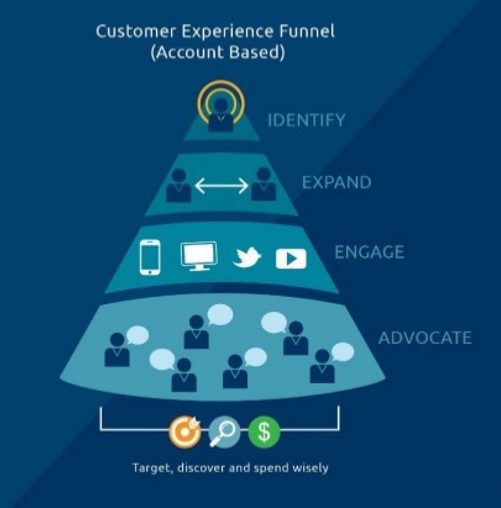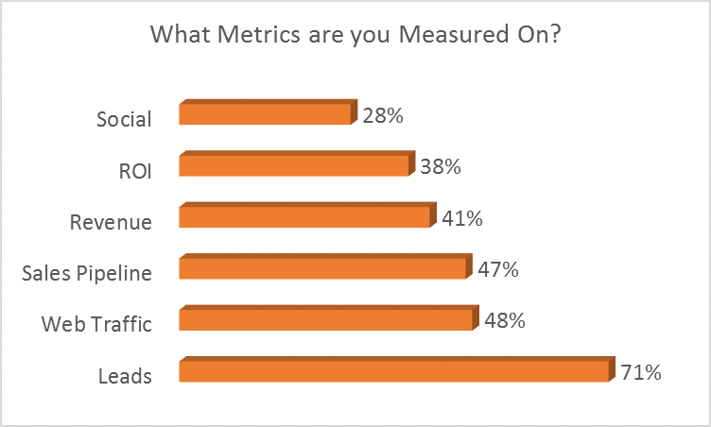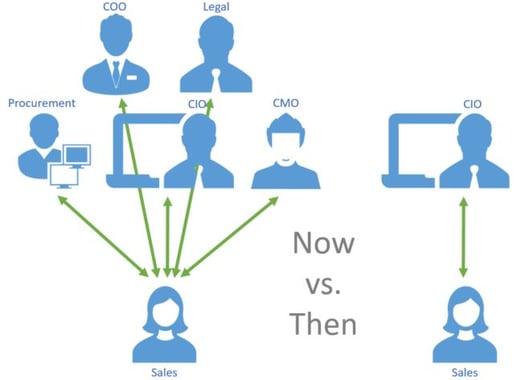Is it time for you, as an engineering / industrial marketer, to consider Account Based Marketing (ABM)?
A lot of engineering marketers are now asking about whether we, as a publisher, can support their ABM efforts. The requests are coming from our largest accounts, the ones who have thousands of accounts themselves. These marketers are often first to test out new marketing technology.
 The “Flipped Funnel” of Account Based Marketing - Slideshare by ABM vendor Terminus
The “Flipped Funnel” of Account Based Marketing - Slideshare by ABM vendor Terminus
The premise of Account Based Marketing is that marketers are wasting resources by trying to engage prospects who will never become customers. The argument goes that if those marketers were to instead identify and focus on the very best prospects, they would convert a much higher number of the right sorts of customers at a lower cost. This idea is described in the “flipped funnel” graphic set out above.
ABM isn’t an either/or proposition. It can be conducted along with your traditional marketing efforts. There is a lot for engineering marketers to learn from this concept.
For those of you who are early in your education about ABM, this post will set out:
- The marketing problem that ABM is designed to solve
- Four steps to ABM for engineering and industrial marketers
- Why ABM is different than having a very good sales person
- How publishers like ENGINEERING.com can participate in your ABM efforts
What is the Problem that Account Based Marketing is Supposed to Solve?
Many marketers are measured on how many leads they can generate and pass to sales. In fact, over 70% of industrial marketers are measured on leads according to a survey of engineering marketers published earlier this year.

From the 2017 Engineering Marketers Spending Plans Research Report
That same survey said that generating more leads was the number one challenge among engineering marketers. This preoccupation with generating leads can cause some real problems. First, the lead quality may be suspect, resulting in the sales team not valuing the efforts that marketers make. Secondly, there are some target companies that the marketing and sales teams really want, but the traditional marketing efforts may not be reaching them.
The best fitting companies, the ones that your sales team really wants to engage, may not ever download your stuff. What’s a marketer to do?
Most sales teams already have a lot of this figured out. They take an account focus. They know what sort of companies are most likely to have the exact problem that your solution can fix, and they know who in those prospect companies they need to reach. However, most marketing teams don’t have a way to support that targeted approach, so they can’t really help their sales reps in those accounts. Marketers who are measured on lead quantity tend to reach for the largest numbers of leads instead.
There are some quotes attributed to Forrester research floating around suggesting that only 1% of all leads convert into customers. That doesn’t sound like reality for the engineering marketers I have met. If a marketer is doing his/her job, they will apply some sort of lead scoring before simply throwing a contact over the fence to the sales team. If only 1% of your leads turn into customers, then neither ABM nor any other acronym is going to save you.
If only 1% of your leads turn into customers,
then neither ABM nor any other acronym
is going to save you.
But the point is still relevant - most leads don’t actually turn into customers, and so they do end up wasting sales resources. Even with a more reasonable number of 25% of leads becoming customers, you’re still going to waste a lot of your sales resources chasing the 75% who never convert.
And so you have conflict between the sales and marketing teams.
How can marketers attract the attention of the best prospect companies and ease the path for sales to engage with these accounts?
The challenge that account based marketing is supposed to address is: How can marketers attract the attention of the best prospect companies and ease the path for sales to engage with these accounts?
Four Steps to Account Based Marketing for Industrial Companies
For industrial marketers, it makes sense to select a certain set of accounts that can lead to exceptionally high value over their lifetimes. And once you select those accounts, it does make sense to go after them in a targeted way. But marketers don’t usually do that. Instead, they try to attract much larger segments of the market. The notion of targeting specific accounts is typically left to the sales teams. ABM is a marketing process that aligns sales and marketing teams around those accounts.
There are four key steps to account based marketing as practiced by engineering marketers.
1. Identify the key accounts
There are some companies who are perfect fits for your solution. They may be in the right industry, the right geography, or own a particular type of equipment or software. Whatever the reason, you and your sales teams know that some prospects have a much higher close rate than others.

Leaving the close rate aside, you know that there are some companies who will be happier with your solution than others. At ENGINEERING.com, for example, we know that we can do a great job for software and manufacturing companies trying to reach design engineers, particularly in North America. We are also very good fits for higher education. But we are not as good at reaching architects for large project buys. That’s just a fact of our audience.
You have the same sort of target segments within your prospect list. The difference with account based marketing is that rather than target an entire segment, you select specific companies within that segment and you make a list.
2. Expand your awareness within those accounts
One of the problems that sales teams face is that there are so many people involved in an industrial buying decision. An article published in the Harvard Business Review points out that on average, 5.4 people have to formally sign off on each purchase, “Whereas an IT supplier might have once sold directly to a CIO and his or her team, today that same firm may also need buy-in from the chief marketing officer, the chief operating officer, the chief financial officer, legal counsel, procurement executives, and others.” It can be worse than that for large industrial purchases like machine tools and enterprise software.

Marketing practitioners have not historically done a great job at helping sales teams expand the number of contacts within any given account. With an ABM framework, that task now falls squarely on the marketer’s shoulders. As a marketer, you would have the job of attracting all of the right stakeholders in your target account to make them aware of your solution and help move them along the decision path.
For example, you might decide that you want to place banner ads in front of people in the design engineering department within your target accounts to make them aware of your solution. You might want those banners to follow these people around the Internet through retargeting to increase the likelihood that they see your message. You might want to reach them on social media, on their mobile devices, or through email. Or all of the above.
This is where software solutions for ABM come in. Companies like Demandbase, Terminus and Azalead have developed software that will track your anonymous web visitors, and then place your message in front of a broad range of your prospects across multiple channels.
3. Generate engagement
Once you have created awareness in your target companies, you will want to offer those prospects some additional education to help them understand the value of your solution. Ideally, these messages will be very targeted, not only to the company and their industry problems, but also to the role and seniority level of the person who you are trying to engage.

For example, you might have a certain message for the CXO’s that revolves around the business value of your solution and a different message for the engineers that sets out the way your solution works. Each of these messages would be supported by different assets with different landing pages.
This step is one where marketers typically balk, because to do this right, you need to have a lot of content. The advocates of ABM say that it is all worth it, but you will have to do the arithmetic yourself before you decide.
There are some shortcuts you can take. For example, if you are targeting a handful of customers in a certain industry, the content that you target to all of the people in the product design team can be the same. You might make only minor modifications for the finance people, and that content may also be a good fit for the C suite.
When it comes to making new content for a different industry, even that can be simplified. For example, if you have an eBook, you might want to write a couple unique industry-specific introductory pages and a unique summary page, but the rest of the content might be generic across all industries.
Like inbound marketing, the goal of your efforts at the engagement stage is to win the contact information for all of the influencers in a prospect account. Once any individual gives their contact information, you can continue to nurture them through your normal marketing automation system.
4. Connect your engaged targets to your sales team
Alignment between Sales and Marketing is always important, but never more than when implementing an ABM strategy. Your marketing team has to advise your sales team whenever someone from their target account moves forward along their buying journey.

This is relatively easy to do in concept, but difficult to do in reality. If you are running a small organization, regular meetings can do the job. If not, you will likely have to connect an ABM marketing system to your marketing automation system and onwards to your CRM system. If you have software from the standard stack of marketing automation, such as Hubspot, Marketo, et al, and a standard CRM tool like Salesforce, then this should be relatively straightforward. It gets much tougher if you don’t.
You need this integrated system to help the sales team stay on top of the opportunities they are pursuing. It is very helpful for them to know who in their target account’s finance department, for example, recently downloaded a white paper. That way they can engage with their prospect from a position of knowledge.
The other big reason to integrate these systems is for reporting back to the marketing team. If you know automatically that an opportunity has been created by the sales person in your CRM system, then you know that your activities are working. If you have to rely on your sales team to report back to you on an ad hoc basis, you will likely be disappointed.
You can take this level of integration a step farther. For example, your CRM system contains information about which accounts are currently evaluating your solution. You may decide that targeting specific messages to people within that account while they are in the deliberation stage may actually help you’re your sales team close a deal. This is the sort of opportunity for adding marketing value that only comes to light through an ABM strategy.
Why is ABM different than having a really good sales person?
A good sales person might craft a unique sales message that resonates with a certain level of individual in a certain role and at a company in a certain industry. And they might be able to do that across several roles and industries.
They might even look up the Linkedin profile of their prospects and find some sort of personal connection between the company and the recipient, like maybe they went to the same university as one of your colleagues. These sorts of personal research efforts are bread and butter to sales representatives, but they are still typically reliant on email or phone calls to get through.

ABM can assist with those efforts. A good ABM system will help you identify the missing pieces withing the target departments within the target accounts and reach out to those people through multiple channels rather than only email or telephone. As a result, there is a high likelihood that your message will reach somebody that the sales efforts have overlooked, and at a price that although high for marketing, is still lower than a full-on sales effort.
Another big difference between ABM and a really good salesperson is scalability. Individual salespeople can only work so many hours and can only send so many emails.
Marketers are uniquely well qualified to craft the wide range of messages that are required for the various roles and companies that you will want to attract through your ABM efforts. Marketers are also expert at crafting the content that ABM needs for success, including the gated assets and the appropriate landing pages. While Sales and Marketing need to work closely to agree on the targeted accounts and the messaging, the main responsibility for executing ABM lies with marketing.
How Publishers help your Account Based Marketing efforts
Publishers are great at creating content. Let’s say you need a message to send to an industry executive. Sending them a link to a thought-provoking article, research report or webinar that appears in a trusted publication is one tried and true technique for getting their attention.
Publishers also have excellent email lists, with many of your target prospects on them. You can use these mailing lists to deliver your content assets to the accounts on your list. While the cost of delivering these assets will be higher on a per email basis, the premise of ABM is that the higher cost will be rewarded with higher conversion rates.
If you are looking to experiment with ABM this year, and that includes many of you, let us know. We’re always game to try something new.
And if you thought this post was worthwhile, please share it with your colleagues and on social media.
Thanks,





